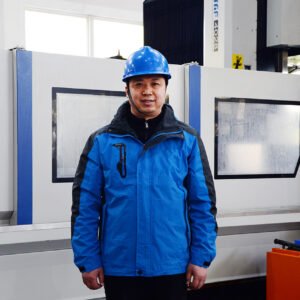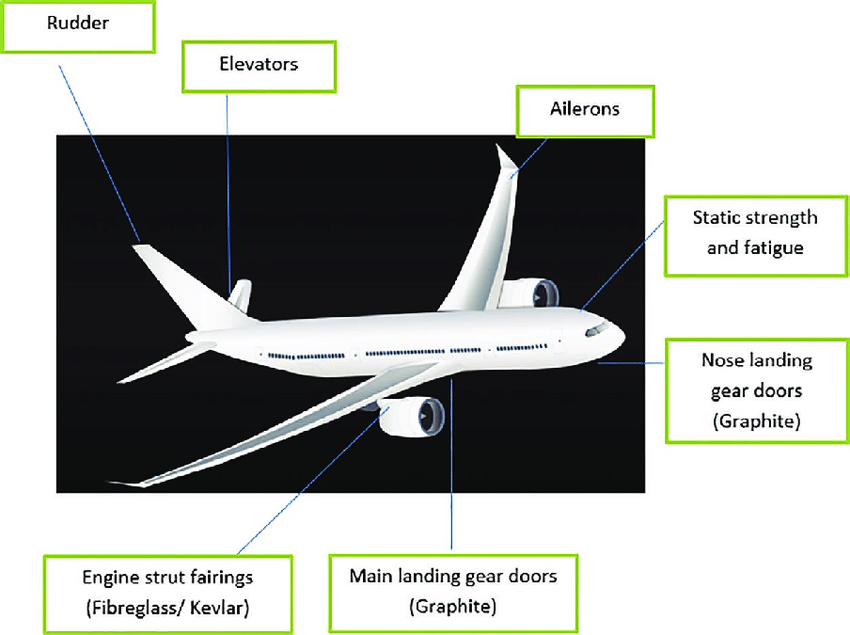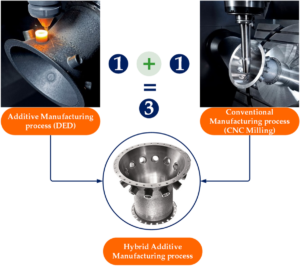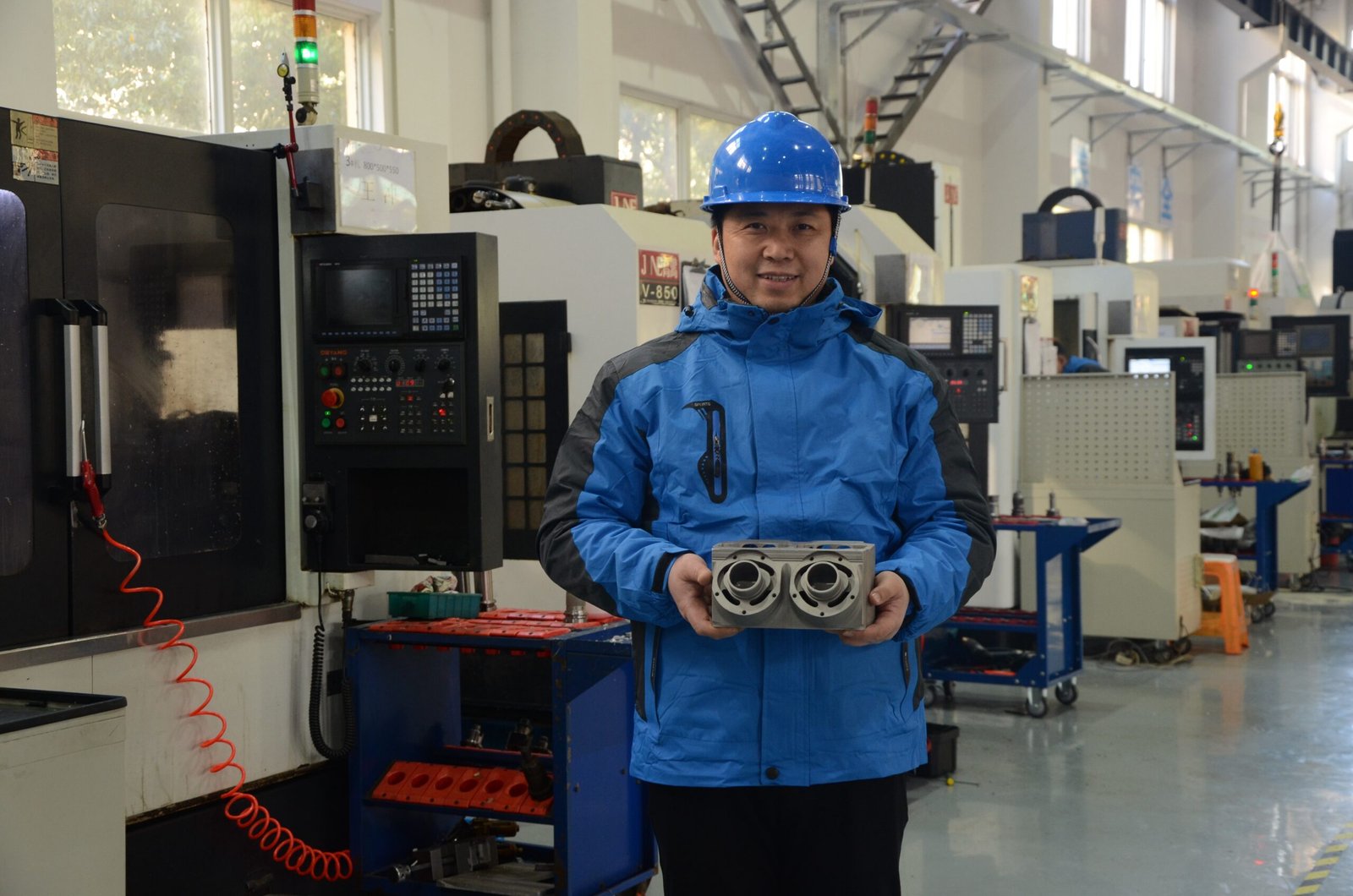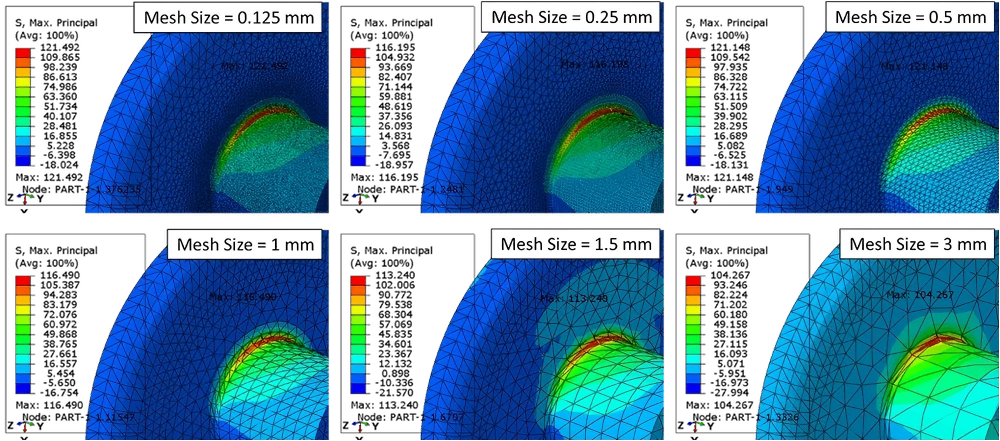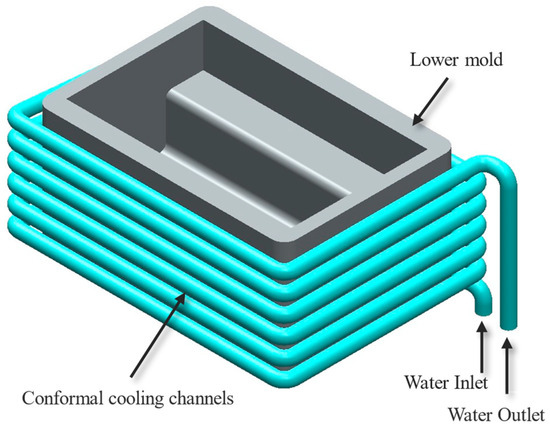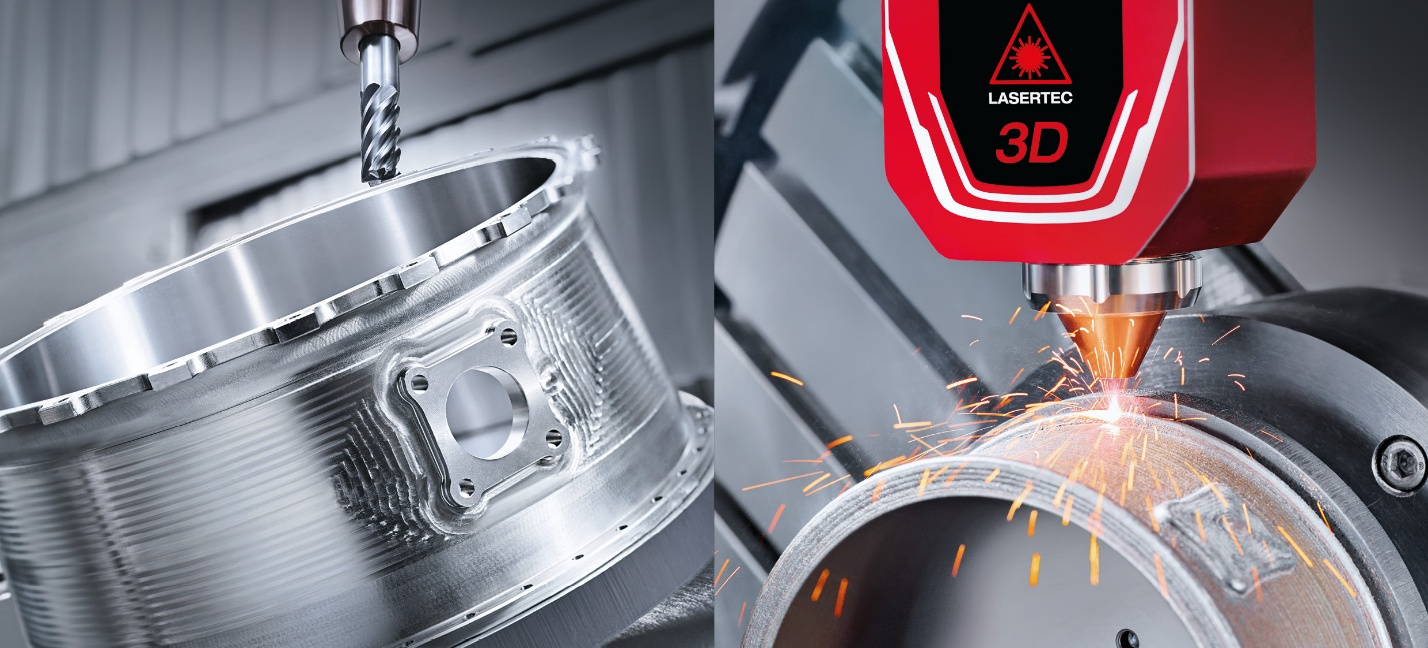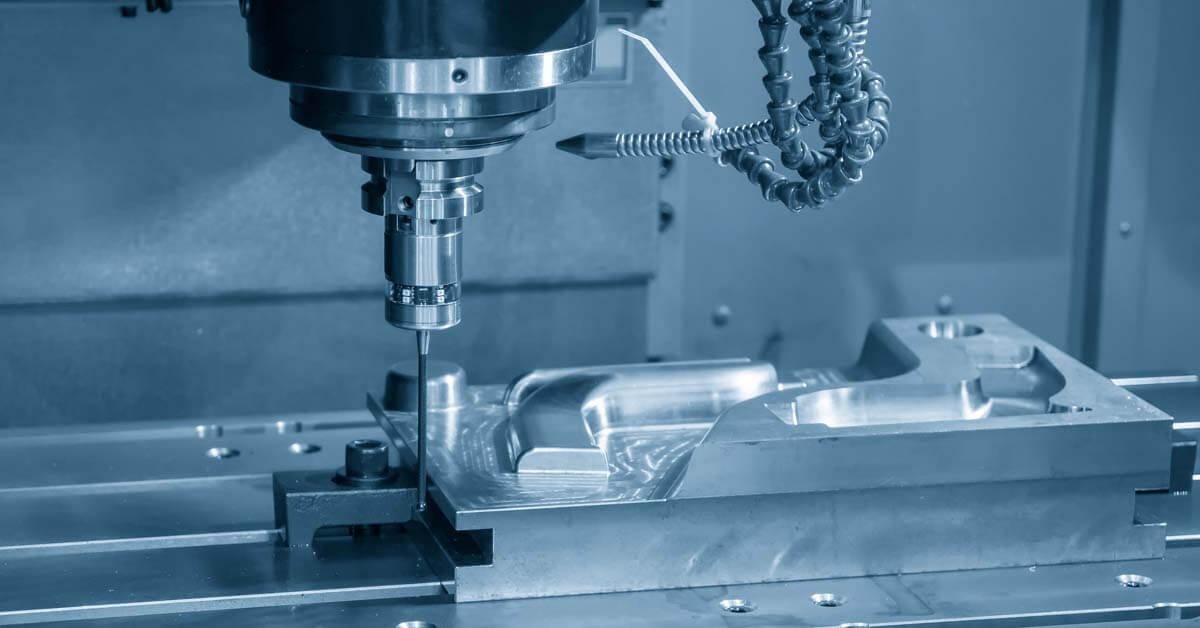
How can you make parts for airplanes that are both lightweight and robust enough to withstand the demands of flight? What guarantees that all an aircraft's parts, including wing brackets and engine turbines, operate faultlessly above 35,000 feet?
Aircraft parts have to withstand tremendous strain, function perfectly under challenging circumstances, and adhere to stringent safety regulations. When these difficulties arise, traditional manufacturing techniques frequently fail to meet expectations.
Then comes CNC machining, a breakthrough that has revolutionized the aerospace sector. CNC machining is the foundation of contemporary aircraft manufacture due to its unmatched precision, versatility for complex geometries, and capacity to work with durable materials. But what particular challenges does it overcome?
From dealing with material hardness to reaching micron-level accuracy, we'll examine the main issues in aviation machining in this article and how CNC technology advances to address them. In an attempt to ensure that the aviation sector keeps pushing further in terms of performance and safety. Come along with us as we explore how CNC machining will influence aerospace innovation in the future and how CNC technology tackles challenges.
2. Key Materials Used in Aircraft Structural Components
Structural elements of aircraft are made to balance weight, strength, and durability, a combination that is essential for both performance and safety. This unique balance is achieved by the use of carefully selected materials that have been customized to the unique needs of the aerospace industry. Let's examine the main aerospace materials and the reasons they are essential to the production of airplanes.
● Aluminum Alloys
Why It Used: Aluminum alloys are widely used in aircraft applications because they are lightweight, corrosion-resistant, and extremely machinable.
Applications: Because of their exceptional strength-to-weight ratio, they are widely utilized in internal frames, wings, and fuselage skins.
● Titanium Alloys
Why it is Used: High-stress components benefit greatly from titanium alloys, which are renowned for their remarkable strength, heat resistance, and corrosion resistance.
Uses: frequently found in landing gear, jet engine components, and locations subjected to high temperatures.
● Composites:
Why it is Used: Composites Like fiberglass and Kevlar have transformed contemporary aircraft design by combining strength and impressive weight savings.
Applications: Widely utilized to improve fuel efficiency in wing structures, tail assemblies, and fuselage sections.
● Steel Alloy
Why it is Used: Steel alloys are essential for certain load-bearing components because of their exceptional strength and endurance.
Applications: Usually utilized in engine mounts and landing gear parts where high stress is present.
● Magnesium Alloys
Why It is Used, magnesium alloys are an affordable option for non-critical components since they are lightweight and machinable.
Applications: Frequently found in housings and interior components where less strength is required.
● Nanomaterials
Why It is Used: Composites made of nanomaterials like graphene and carbon nanotubes (CNTs) are incredibly strong and lightweight. These materials make aircraft weigh less overall, which improves fuel economy and lowers pollutants.
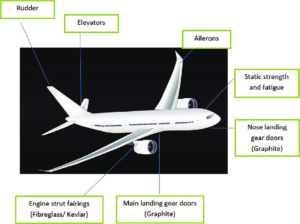
3. Role of CNC Machining in Aircraft Structural Component Manufacturing
The production of aircraft structural components relies heavily on CNC (Computer Numerical Control) machining, which helps the aerospace sector achieve its exacting, dependable, and efficient standards. In this challenging industry, CNC machining promotes innovation and quality in the following ways:
1. Accuracy and precision
Tolerances within microns are frequently needed for aircraft components since even the smallest deviation might compromise safety or performance. Because of the unmatched accuracy that CNC machining provides, each component will fit precisely into the entire assembly.
2. Handling Complicated Geometries
Complex geometries and intricate shapes are frequently used in modern aircraft designs to enhance functionality and aerodynamics. These intricate elements, including fuselage panels and turbine blades, may be easily produced by CNC machining because of its multi-axis capability.
3. Compatibility with Advanced Materials
Advanced materials that are difficult to manufacture, such as composites, titanium, and aluminum alloys, are used in the production of aircraft. Accurate handling of these materials via CNC machining reduces waste and preserves the material's integrity.
4. High Reliability and Efficiency
In aerospace manufacturing, reliability is essential. The high repeatability offered by CNC machines enables producers to mass-produce similar items without sacrificing accuracy or quality.
5. Efficiency in Time and Cost
CNC technology decreases production time and manual labor by automating the machining process. This leads to affordable ways to meet deadlines while producing high-performance components.
6. Assurance of Quality
Advanced quality control techniques including automated inspections and real-time monitoring are integrated into CNC machining. This guarantees each component satisfies the exact requirement needed for aeronautical applications.
4. Specialized Machining Techniques for Aerospace Components
The aerospace sector requires modern machining methods to produce parts that satisfy true performance and safety requirements. Due to advanced machining techniques and ultra-lightweight designs, every component is prepared for the demands of flight. Let's examine some of the most important machining methods designed specifically for aeronautical parts.
1. Hybrid Additive Machining
Why Is It Used? Conventional machining methods combined with additive manufacturing (3D printing).
Why It Matters: Custom, lightweight designs are made possible by additive manufacturing, and the finished product is strengthened and precisely machined using hybrid machining.
How It Works: The process involves heating the workpiece with a laser, which softens the material for simpler shaping or cutting.
Applications:
- Titanium Parts: Lower tool wear and cutting forces.
- High-stress components improve the machinability of Inconel and other superalloys.
2. Electrical Discharge Machining(EDM)
Why Is It Used? An advanced manufacturing technique named Electrical Discharge Machining (EDM) employs electrical discharges for accurately shaping materials. EDM is used to shape difficult-to-machine materials, such as nickel or titanium alloys.
Why It Matters: Engine parts, which need precise tolerances and smooth finishes, are examples of sensitive or high-stress components that are best produced using this method.
How It Operates: EDM is perfect for hard-to-machine metals and alloys because it erodes material using electrical sparks.
Uses:
- Engine Components: Turbine blade cooling holes are precisely produced by engine components.
- Landing Gear: The landing gear is made of high-strength metals with complex geometry.
3. Water Jet Cutting:
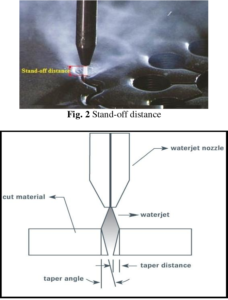
Why It's Used: Waterjet cutting uses high-pressure water streams frequently combined with abrasive particles to cut materials with little heat.
Why It Matters: Waterjet cutting preserves material integrity by milling metals and composites without generating heat stress.
The Process: A high-pressure water jet is frequently combined with abrasive materials that can cut through a variety of materials without producing heat.
Utilization:
- Composite structures: Carbon fiber can be cut without fraying or delamination in composite structures.
- Fuselage Panels: Create precise incisions on titanium and aluminum sheets.
4. Precision Grinding:
Why it is Used: Using abrasive wheels an extremely smooth finish and precise tolerances are achieved with this precision grinding technique.
Why It Matters: Important surfaces on elements such as engine parts and landing gear struts are precision ground to meet precise tolerances.
How It Operates: A tool is subjected to high-frequency vibrations abrasively or micro-chips material.
Uses:
- Ceramic heat shields: Precision in delicate, heat-resistant components is ensured by ceramic heat shields.
- Glass cockpit displays: Hard and fragile materials can be shaped with glass cockpit displays with little harm.
5. Multiple Axis CNC Machining
What It Is: Multi-axis CNC machining produces intricate forms by using machines with five or more axes.
Why It Used: Aerospace components frequently have complex shapes that are impossible to accomplish with conventional machining. Turbine blades, wing ribs, and structural brackets may be produced with remarkable precision due to multi-axis machining.
How It Works: Multi-axis CNC machines work on four, five, or more axes, unlike traditional three-axis machining. This makes it possible to move simultaneously along several planes, enabling the construction of intricate shapes in a single configuration.
Uses:
- Turbine Blades: Complex aerodynamic designs need accurate, smooth curves to improve performance.
- Structural Brackets: Multi-axis machining guarantees strength in structural brackets without sacrificing lightweight design.
6. Cryogenic Machining
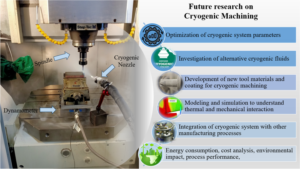
Why Is It Used? This technique uses liquid nitrogen as a coolant to preserve material integrity during machining.
Why It Matters: Cryogenic machining is perfect for heat-sensitive materials because it minimizes tool wear and improves product quality, particularly for alloys like titanium and nickel.
How It Operates: Parts are machined rapidly and effectively by utilizing high spindle speeds and feed rates.
Utilization:
- Wing Panels: Generates big, light structures of a constant caliber.
- Frames and Supports: Machines aluminum and composite components efficiently.
7. High-Speed Machining (HSM)
Why It Used?: Rapid feed rates and spindle speeds are used in high-speed machining to swiftly manufacture items.
Why It Matters: It increases production efficiency while preserving the accuracy needed for large parts like wing panels or fuselage sections.
How It Works: To prevent heat accumulation and maintain material integrity, the cutting region is cooled using liquid nitrogen or carbon dioxide.
Uses:
- Engine Turbines: Preserves nickel alloys' material qualities while they are being machined.
- Landing Gear Components: Lowers thermal stresses to increase endurance.
5. Innovations in Machining Processes
Modern machining techniques are necessary for the aerospace sector to maintain its leadership in producing precise parts. In addition to overcoming long-standing obstacles, machining innovations redefine production's accuracy, efficiency, and scalability. The following innovative developments are propelling the development of machining processes:
1. Adaptive Machining
What It Is: An innovative manufacturing technique called adaptive machining uses real-time sensor feedback to dynamically modify machining settings, cutting paths, and tool locations.
Advantages:
- The system continuously adjusts cutting speeds and tool routes based on the data.
- It maximizes cutting parameters to extend tool life and minimize wear.
Applications:
- Frequently used to polish or repair expensive parts, such as turbine blades.
2. The Digital Twins Technology
What It Is: A virtual version of a real object or process, known as "digital twin technology," enables data analysis and real-time simulations to optimize processes before actual manufacturing.
Advantages:
- Determine potential challenges and adjust parameters without wasting resources.
- Assures accuracy when machining engine parts.
- Enhances machine configurations and tool routes.
Applications:
- Digital twins preserve downtime and defects by anticipating issues like tool wear, thermal distortion, or material discrepancies.
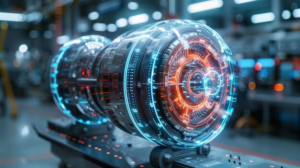
3. Ultrasonic Machining
What It Is: Ultrasonic machining (USM) is a leading-edge production method that blends conventional cutting or grinding procedures with high-frequency ultrasonic vibrations. Particularly for hard and fragile materials like ceramics, glass, and advanced composites.
Benefits:
- This technique improves material removal efficiency.
- Reduces tool wear and provides smoother finishes.
- Perfect for cutting composites and ceramics.
Applications
- It includes the fabrication of parts like as glass-based cockpit displays and ceramic heat shields.
4. Laser-assisted machining (LAM)
What It Is: A laser is used in the innovative process known as laser-assisted machining (LAM) to heat and soften materials that can be difficult to machine.
Benefits:
- The focused heating ensures improved surface finishes and cleaner cuts.
- Lower tool wear and cutting forces.
- It works well with materials that are normally impossible to machine like Inconel and titanium using traditional methods.
Applications:
- Manufacturing high-strength structural elements and jet engine components.
5. Micro-Machining:
What It Is: Micromachining is a specialized technique for precisely forming small features on aerospace components.
Benefits:
- Makes component miniaturization possible.
- Enables tiny items to have smooth surfaces and tight tolerances.
Applications
- It includes complex engine parts, sensors, and connectors.
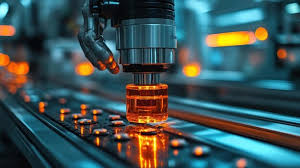
6. Smart Machining Centers Powered by IoT
What It Is: Machine conditions are continuously monitored and analyzed using Internet of Things (IoT)-enabled smart machining centers. IoT-enabled machines track cutting forces, tool wear, and vibrations in real-time.
Advantage:
- Cutting forces, tool wear, vibrations, temperature, and other critical characteristics are tracked by these machines, allowing for data-driven decision-making to improve productivity, precision, and dependability.
- Improved predictive maintenance.
- It increases operational uptime through early detection of possible problems.
Applications:
- In the manufacturing of valuable items such as landing gear and engine parts.
8. High-Performance Coated Tools
What It Is: Innovative coatings, such as ceramic or diamond, improve tool performance in harsh environments.
Benefits
- It includes increased cutting efficiency and longer tool life.
- It permits the machining of composites and high-strength metals.
Applications:
- Machining parts such as structural fasteners and turbine blades.
7. Machine learning and artificial intelligence (AI)

What It Is: AI-powered systems evaluate machining data to enhance quality control, optimize parameters, and forecast tool wear.
Benefits:
- Increases process efficiency and decreases downtime.
- It uses predictive maintenance to guarantee constant part quality.
Applications
- It includes multi-axis CNC machining process monitoring and optimization.
How These Technologies Influence Aerospace Production
The precision, reliability, and scalability required by the aircraft sector are met by these developments in machining techniques. By implementing these innovative techniques, manufacturers can:
- Cut expenses and waste.
- Boost the performance and quality of the product.
- Increased manufacturing speeds allow you to meet more demanding deadlines.
Innovation is vital to the aerospace industry, and the advancement of machining techniques keeps manufacturers at the forefront of this ever-changing field.
6. Challenges in Machining Aircraft Structural Components
One of the most difficult production processes is the machining of structural parts for airplanes. Aircraft parts must adhere to tight industry norms and meet exacting requirements for precision, strength, weight, and performance. Some of the main challenges in aircraft manufacturing techniques are listed below:
1. Tight Tolerances and Complex Geometries:
Challenge: Aircraft parts, including engine parts, fuselage panels, and wing ribs, frequently need tolerances of less than a micron. Intricate designs and complicated geometry also make things more challenging.
Impact: Even little variations can jeopardize functionality, safety, and aerodynamics.
Solution: Use adaptive machining technologies and multi-axis CNC machining to attain high precision.
2. Machining Advance Materials:
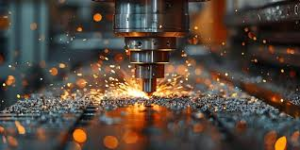
Challenge: Aerospace manufacturers commonly utilize materials including titanium alloys, carbon fiber composites, and Inconel, which present a challenge for machining because of their hardness, heat resistance, or brittleness.
Impact: Delamination, heat damage, and excessive tool wear are possible outcomes of traditional machining techniques.
Solution: It is that specialized methods like waterjet cutting, laser-assisted machining, and cryogenic machining can help get beyond material issues.
3. Managing Thermal Effects
Challenge: The heat generated during machining can cause material distortion or compromise dimensional accuracy, especially in metals that are sensitive to heat.
Impact: Stress concentrations and errors in crucial areas can result from thermal expansion.
Solution: Novel cooling techniques that reduce heat damage include mist-based systems and cryogenic coolants.
4. Tool Durability and Wear
Challenge: Aerospace materials' hardness and abrasiveness lead to quick tool wear, which raises expenses and downtime.
Impact: Changing tools frequently might cause production disruptions and endanger uniformity.
Solution: Longer tool life is achieved by using high-performance cutting tools with cutting-edge coatings like diamond or ceramic.
5. Maintaining Lightweight Design
Challenge: Aircraft parts need to be robust and lightweight, which means that material must be removed without sacrificing structural integrity.
Impact: Components may get weakened by excessive machining or uneven material removal.
Solution: Material is only removed where it is required thanks to precision machining and optimized tool paths.
6. Time constraints and high production costs
Challenge: Long production cycles and costly tools, materials, and equipment are needed for aerospace machining.
Impact: Whole production schedules may be affected by delays in the machining of essential components.
Solution: IoT-enabled systems, automation, and high-speed machining shorten production times and optimize workflows.
7. Quality Assurance and Compliance:
Challenge: The aerospace components have to undergo stringent quality control tests and follow stringent industry standards like ISO 9001 and AS9100.
Impact: Any flaw has the potential to cause costly recalls or safety problems.
Solution: Components satisfy standards due to advanced inspection methods including in-process monitoring and CMMs (Coordinate Measuring Machines).
8. Machining Large Parts
Challenge: It is that large structural elements, like wing spars or fuselage sections, need specific equipment to manage their bulk and complexity.
Impact: It can take a lot of time and floor area to machine such pieces.
Solution: Gantry CNC machines and modular machining systems are made to effectively handle large items.
9. Surface Finish Specifications
Challenge: It is to reduce drag by having ultra-smooth finishes on parts that are exposed to airflow, like wing surfaces.
Impact: Poor surface quality can have an impact on fuel economy and aerodynamic performance.
Solution: High-quality surfaces are guaranteed by sophisticated finishing techniques, polishing, and precision grinding.
7. Quality Control and Testing Of CNC Machined Parts
Precision production relies heavily on CNC machining, particularly in sectors like medical devices, automobiles, and aerospace. However, there are drawbacks to this approach, including high production costs, complicated materials, and strict tolerances. To solve these issues, testing and quality control (QC) are crucial because they ensure that components meet strict specifications and perform reliably under challenging conditions. Here's how:
1. Measurement Accuracy Confirmation
Importance: To guarantee correct assembly and operation, CNC-machined components need to meet precise measurements.
Procedures:
- Use CMMs, or coordinate measuring machines to check intricate geometries and tolerances, and provide high-precision measurements.
- For delicate and intricate parts, laser scanning provides a non-contact inspection method.
- For fast measurements of basic dimensions, calipers, and micrometers are helpful tools.
2. Surface finish Testing:
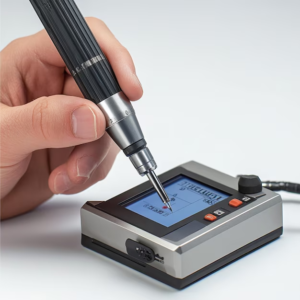
The significance of surface finish testing comes from the fact that smooth surfaces improve fatigue resistance, lower friction, and improve aerodynamics in aeronautical components.
Procedures:
- Profilometers: Provide extremely accurate surface roughness measurements.
- Visible flaws such as scratches or tool marks are found through visual inspection.
- Advanced Imaging recorded microscopic anomalies to be examined.
3. Consistency and Integrity of Materials
The structural integrity of CNC-machined parts is crucial, particularly for high-stress aerospace applications.
Procedures:
- Hardness testing verifies that the substance satisfies strength requirements.
- Verifies material homogeneity and identifies defects like inclusions or porosity using microstructure analysis.
- Using techniques like spectroscopy, and chemical composition testing confirms that the substance satisfies the requirements.
4. NDT (non-destructive testing)
Identifies intrinsic flaws without causing harm to the component, maintaining its functionality.
Techniques;
- Ultrasonic Testing: Finds inclusions, voids, or cracks beneath the surface.
- X-ray inspection is perfect for intricate components with concealed characteristics.
- Dye Penetrant Testing: Draws attention to surface flaws and fissures in metal parts.
5. Fit Validation and Tolerance:
CNC parts frequently include crucial mating features that need precise tolerances to guarantee correct assembly.
Techniques;
- Gauging Tools: Compare components to standards or pre-established templates.
- Functional Testing: Assembles components to verify functionality and fit.
6. Load and Stress Testing
The significance of load and stress testing is in its ability to guarantee that CNC-machined components can endure operational loads without failing.
Procedures:
- To evaluate durability, fatigue testing replicates repeated loading.
- The strength of a substance under stress is measured by tensile testing.
- Pressure testing verifies parts, including hydraulic or pneumatic systems, that are exposed to high internal pressures.
7. Automating Quality Control
Quality checks that are automated decrease human mistakes, guarantee uniformity, and cut down on inspection time.
Procedures:
- Real-time flaw detection is possible with machine vision systems that use cameras and AI.
- In-Process Monitoring: To preserve part quality, it keeps track of machining characteristics such as tool wear, vibrations, and temperature changes.
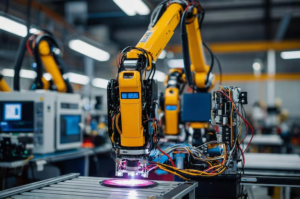
8. Applications of CNC Machined Components in Aircraft
The aerospace industry depends heavily on CNC-machined parts because they offer accuracy and functionality for a variety of aircraft systems.
- Structural Parts:
The strength and longevity of structural components, such as fuselages, wing spars, ribs, and landing gear, which endure heavy loads during flight, are guaranteed by CNC machining.
- Engine Parts:
Compressor parts provide effective engine running, while machined turbine blades, discs, and casings are made to resist high temperatures and mechanical strains.
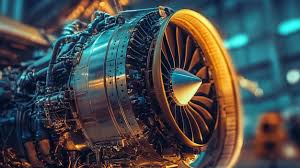
- Avionics:
Reliable operation in difficult circumstances is ensured by precision-machined housings that protect delicate electronic systems, including navigation, communication, and sensor components.
- Hydraulic and Pneumatic Systems:
Accurate control of landing gear, braking systems, and flight surfaces like flaps and rudders is made possible by machined valves, pumps, cylinders, and actuators.
- Propulsion Systems:
To maximize performance and economy in both jet and propeller-driven aircraft, CNC machining is crucial for parts like fuel injectors, exhaust systems, and propeller hubs.
- Interior Systems:
Passengers' comfort and safety are enhanced with lightweight machined seat frames, overhead storage systems, and other cabin elements.
- Fasteners and Connectors:
Secure and dependable connections throughout the aircraft structure are guaranteed by machined bolts, screws, pins, and rivets.
9. Innovations in Aircraft Component Machining
The machining methods used in the production of aircraft components are always changing along with the aerospace industry. The development of lighter, stronger, and more fuel-efficient aircraft is being fueled by advancements in CNC machining, which are improving precision, efficiency, and material capabilities. The following are some significant innovative machining of airplane components:
- Automation and Robotics Integration: For more reliable and effective production processes, automation and robotics are being combined with CNC machining more and more.
Benefit: Increases productivity by automating inspection, loading, and unloading processes, enabling the production of more complicated parts with less human involvement.

- Automation of AI-Driven Processes and Intelligent Machining: Machine learning and artificial intelligence (AI) are being used to optimize machining operations in real time.
Benefit: These technologies guarantee ideal conditions, predict tool wear, and modify machining parameters, which improves part quality and lowers waste.
- Advanced Coatings and Surface Treatments: The performance and durability of machined components are being enhanced by advancements in coatings, such as wear-resistant finishes and thermal barrier coatings.
Benefit: Lowers maintenance costs and increases the lifespan of important parts, particularly in high-heat and high-stress regions like engine parts.
- In-Process Monitoring and Quality Control: CNC machines are incorporating sophisticated sensors and monitoring systems to keep an eye on variables like cutting forces, vibration, and temperature.
Benefit: Guarantees real-time input on machining conditions, which lowers errors and raises product quality and consistency.
- Integrated and lightweight Designs
Advances in CNC machining are making it easier to produce integrated, lightweight parts, which eliminates the need for intricate assembly.
Benefit: Lighter parts improve overall aircraft performance and fuel efficiency, which is crucial for contemporary, environmentally friendly aircraft designs.
10. Case study
Challenge:
Boeing had a lot of difficulties machining landing gear parts for commercial aircraft. Outstanding strength, accuracy, and dependability are necessary for the landing gear, a crucial component that supports the aircraft during takeoff, landing, and taxiing.
Their hardness and propensity to generate quick tool wear, and ultra-tough materials like titanium and high-strength steel are frequently challenging to process. Furthermore, there was an additional degree of complexity involved in maintaining the strict tolerances needed for performance and safety. So, This is how Boeing resolved these problems by implementing the following fixes:
- Accuracy and Durability in Material Processing: CNC machines with cooling systems and high-performance tools effectively cut through high-strength steel and titanium, guaranteeing steady performance and minimizing tool wear.
- Adaptive Machining: Real-time sensor feedback enabled adaptive machining, which dynamically modified cutting parameters to account for material fluctuations and guarantee precision down to the micron level.
- Process Simulation: By anticipating possible problems and streamlining tool paths, digital twin technology reduced errors and material waste during the machining process.
- 5-Axis CNC Machines: Reduced mistakes and cycle times by enabling the precision machining of complicated geometries in a single setup.
- Advanced Cutting Tools: Tool wear was reduced using carbide tools with diamond-like coatings.
- Automated Inspection Systems: Components were guaranteed to meet strict quality standards by real-time part monitoring.
Outcomes:
- production cycle time saving of 20%.
- reduced faults and rework due to better part quality.
- 15% lower operating expenses.
- improved safety and adherence to FAA regulations.
11. Future Trends Shaping the CNC Machining for Aircraft Parts
Advancements that improve accuracy, efficiency, and material capabilities will determine the future of CNC machining in the aerospace industry. Here are some major future trends in aerospace influencing the sector:
- AI and Machine Learning: Enhancing real-time process modifications, forecasting tool wear, and optimizing cutting parameters are all possible using AI and machine learning to increase productivity and quality.
- Hybrid Machining: Combining CNC with additive manufacturing to produce intricate, lightweight parts with integrated features is known as hybrid machining.
- Advanced Materials: CNC technology is developing to work with hard materials like composite alloys and titanium, allowing for lighter, stronger aviation parts.
- Robotics and automation: using robots in machining operations to increase precision, decrease errors, and increase production efficiency.
- Sustainability: Using greener manufacturing techniques to cut down on waste, energy use, and carbon emissions.
- Real-time Data Collection: Monitoring machine performance and streamlining procedures for increased dependability and efficiency is known as real-time data collection.
- Nanocoatings: Using innovative coatings, like nano-coatings, to improve the performance and longevity of high-stress parts like turbine blades.
- Cloud System: Remote monitoring and data analysis are made possible by cloud-based systems, which increase supply chain effectiveness and production flexibility.
Conclusion
Modern aerospace manufacturing relies heavily on CNC machining to overcome challenges in efficiency, material complexity, and precision. The design and manufacturing of airplane components are changing as an outcome of new trends including AI integration, hybrid machining, innovative materials, and sustainability.
These developments guarantee that aerospace producers can satisfy growing consumer expectations for components that are stronger, lighter, and more effective while upholding strict safety and quality requirements. CNC machining will continue to be at the forefront of influencing aviation's future due to ongoing technological developments, propelling improvements in performance, dependability, and environmental responsibility.

